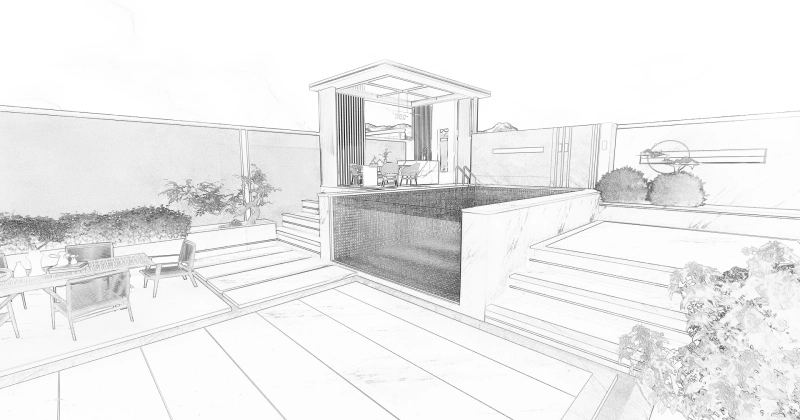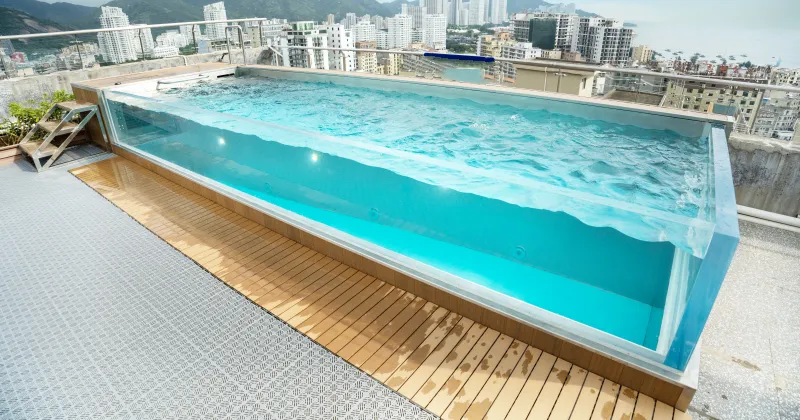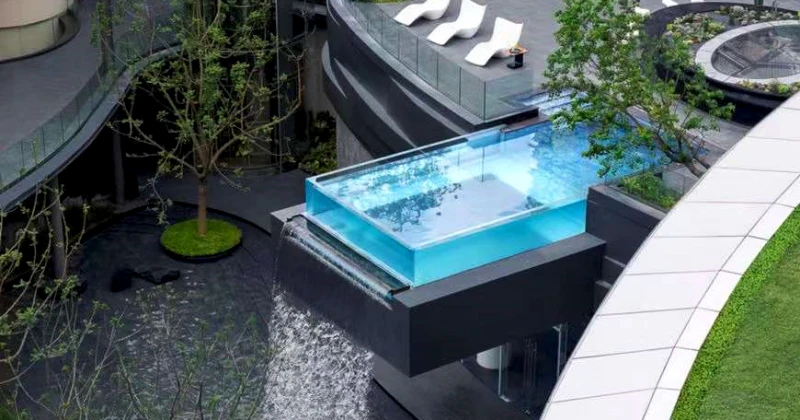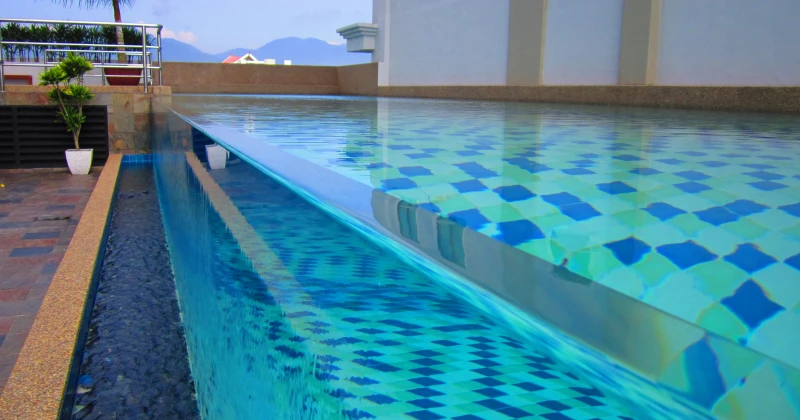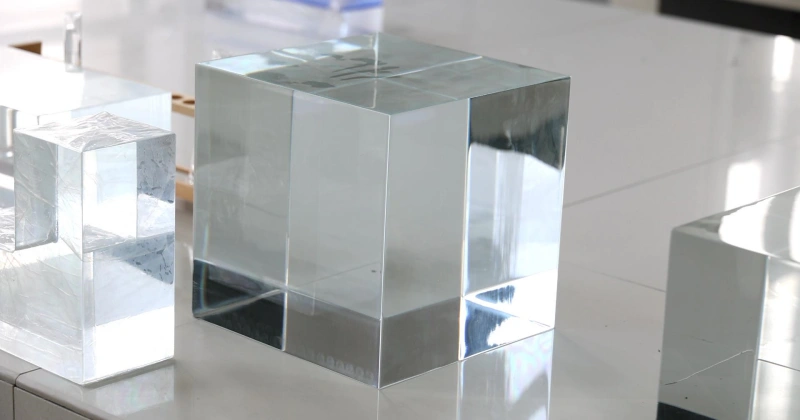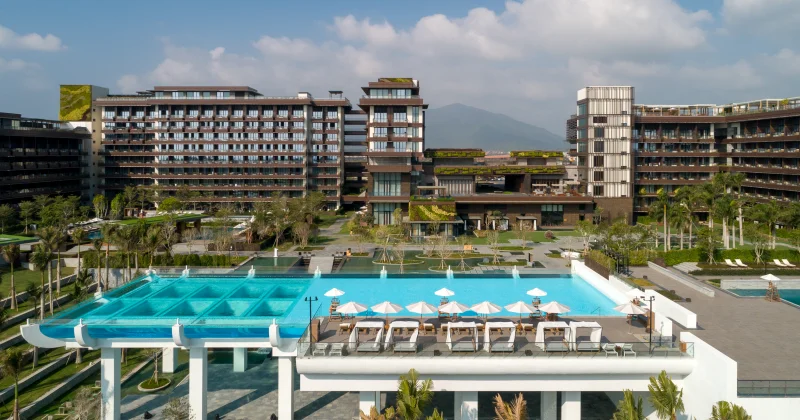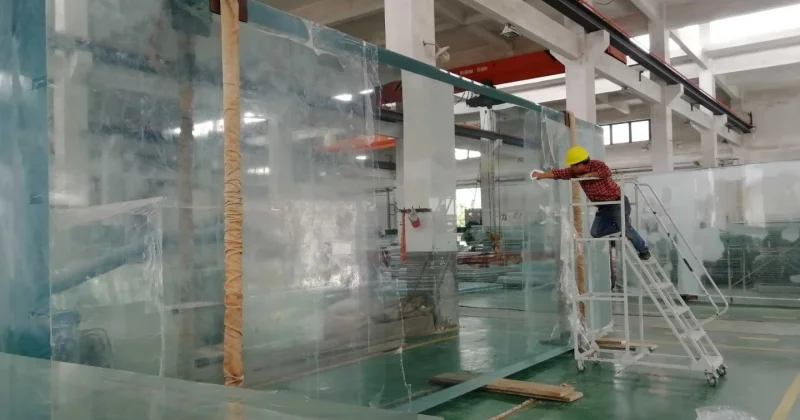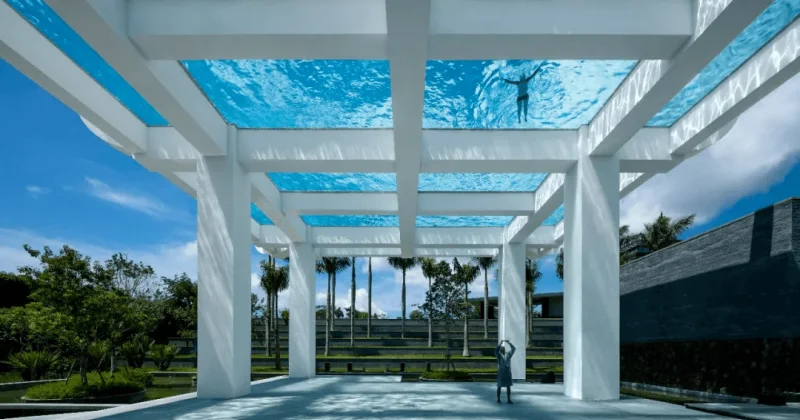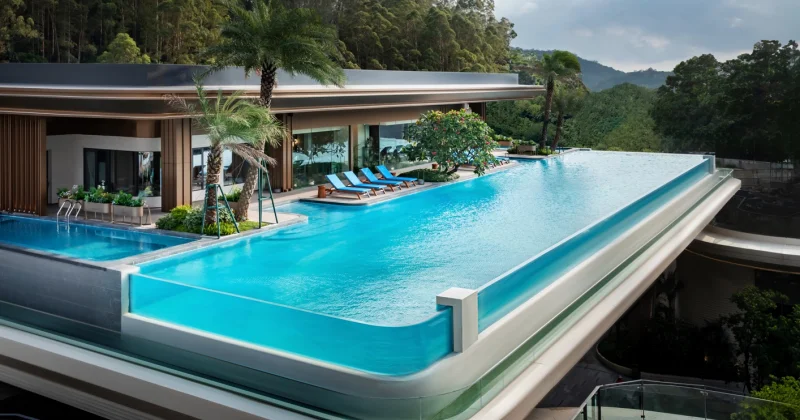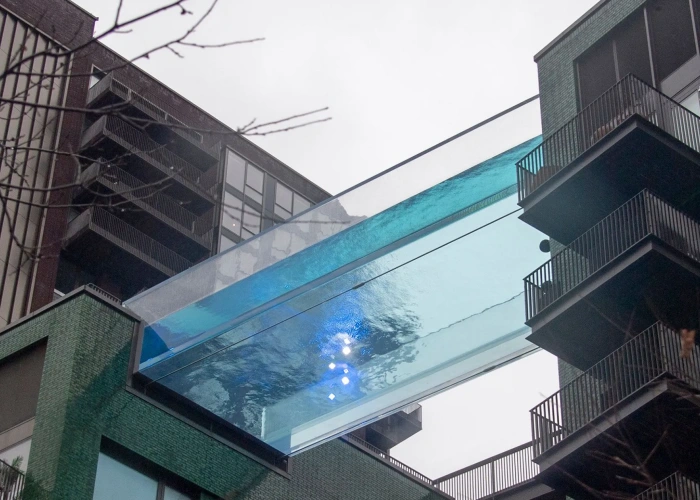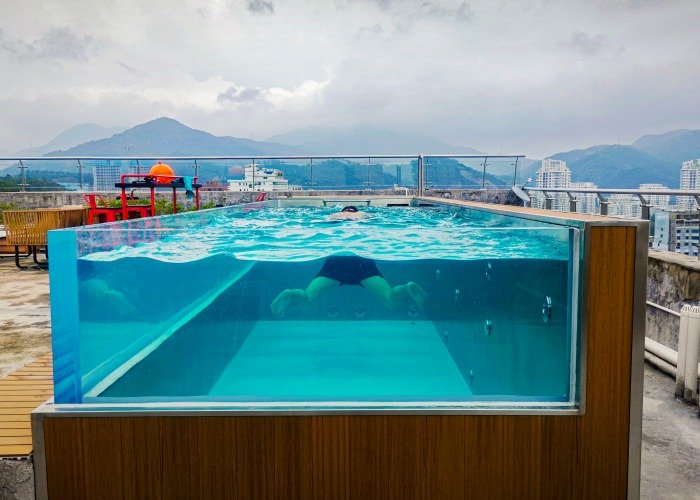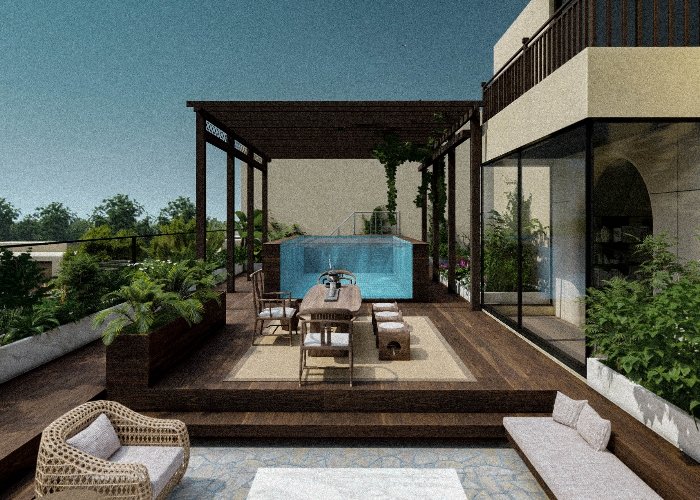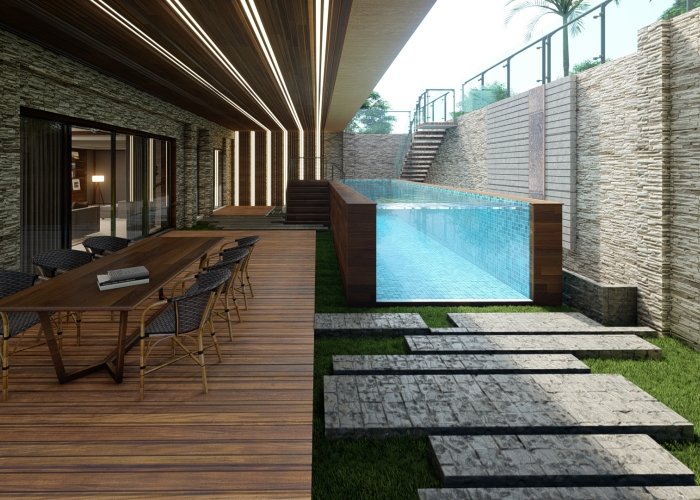
Why use acrylic panels instead of glass for acrylic pool windows?
In aquarium and acrylic pool projects, acrylic panels are often used instead of glass to make transparent windows. There are several advantages to using acrylic panels over glass for acrylic pool windows.

Safety:
Acrylic is a shatter-resistant material, which means it won't break easily when hit or subjected to higher impact forces. This reduces the chance of failure under pressure. This is especially important for pool windows because they need to withstand water pressure and potential impacts. Compared to glass, acrylic panels are more flexible, making them less likely to break under impact or pressure. This flexibility allows acrylic to bend or deform without shattering, which further enhances its safety.
If an acrylic window does break, it tends to crack rather than shatter into sharp pieces, reducing the risk of injury from sharp fragments. This makes it safer in environments where people are present, like pools.
On the other hand, tempered glass breaks into small, blunt pieces rather than sharp shards, making it safer than standard glass. However, laminated glass, while it holds together when broken, still cracks. Despite these safety features, glass is inherently more prone to breaking than acrylic.

Weight:
Regarding weight, acrylic panels are significantly lighter than glass panels of the same thickness and dimensions.
Density: Acrylic has a density of around 1.19 g/cm³, whereas standard glass has a density of around 2.5 g/cm³. This means glass is over twice as dense as acrylic.
Weight Comparison: For instance, a 1/4-inch (6.35 mm) thick acrylic panel weighs approximately 3.3 lbs per square foot (16.1 kg/m²), while a 1/4-inch thick glass panel of the same size weighs around 6.9 lbs per square foot (33.7 kg/m²).
Thickness Factor: The weight difference becomes even more pronounced as the thickness increases. A 1-inch (25.4 mm) thick acrylic panel weighs about 13.2 lbs per square foot (64.4 kg/m²), whereas a 1-inch thick glass panel weighs approximately 27.6 lbs per square foot (134.8 kg/m²).
Handling and Installation: The lighter weight of acrylic panels makes them easier to handle, transport, and install, especially for larger sizes or applications involving manual labor. This can reduce the risk of injuries during installation and maintenance.
Structural Requirements: Due to acrylic's lower weight, it may require less robust framing or support structures compared to glass, potentially leading to cost savings in materials and installation.
The significant weight difference between acrylic and glass is one of the key advantages of using acrylic panels, particularly in applications where weight is a concern, such as pool windows, aquariums, or large glazing projects. The reduced weight not only improves safety and ease of handling but can also potentially lower shipping costs and simplify installation processes.

Clarity:
When it comes to clarity, both acrylic and glass can provide excellent optical properties, but there are some key differences to consider:
Light Transmission: High-quality acrylic panels can transmit up to 92% of visible light, which is comparable to or even slightly better than standard clear glass, which typically transmits around 88-92% of visible light.
Optical Distortion: Acrylic panels have a lower refractive index (1.49) compared to glass (1.52), which means they have less optical distortion and provide a clearer, more undistorted view, especially at thicker gauges or when viewing objects at an angle.
Clarity and Haze: Both materials can achieve excellent clarity when properly manufactured and maintained. However, acrylic is more prone to developing a slight haze or cloudiness over time due to exposure to UV radiation and certain chemicals, which can affect its long-term clarity. Glass is generally more resistant to this type of degradation.
Scratches and Abrasions: Acrylic panels are more susceptible to scratches and abrasions, which can affect their optical clarity over time. However, these scratches can be polished out, allowing the acrylic to regain its original clarity. Glass is harder and more resistant to scratches. Still, if not properly maintained, it can develop a frosted or etched appearance that cannot be repaired.
Surface Quality: High-end acrylic panels can be produced with exceptional surface quality, achieving a level of clarity and smoothness that rivals or exceeds that of standard glass.
Thickness: As the thickness of the material increases, acrylic tends to maintain its clarity better than glass, which can become more distorted or exhibit a greenish tint at greater thicknesses.
In applications where optical clarity is crucial, such as aquariums, viewing panels, or architectural glazing, both acrylic and glass can provide excellent visibility when properly manufactured and maintained. However, acrylic may offer some advantages in terms of undistorted viewing, especially at greater thicknesses or when viewing objects at an angle.

Insulation Properties:
When it comes to insulation properties, acrylic panels generally outperform glass, making them a better choice for applications where thermal insulation is important, such as heated pools or aquariums.
Thermal Conductivity: Acrylic has a lower thermal conductivity than glass, meaning it is a better insulator and provides better resistance to heat transfer. The thermal conductivity of acrylic is around 0.19 W/(m·K), while that of glass is around 1.0 W/(m·K).
U-Value (Heat Transfer Coefficient): The U-value measures the rate of heat transfer through a material. Acrylic panels typically have a lower U-value than glass, indicating better insulation performance. For example, a 1/4-inch (6.35 mm) thick acrylic panel has a U-value of around 0.92 W/(m²·K), while a 1/4-inch thick glass panel has a U-value of around 5.7 W/(m²·K).
Energy Efficiency: Due to its better insulation properties, acrylic can help reduce energy costs associated with heating or cooling the enclosed space. This can be particularly beneficial in applications such as pool windows, where maintaining water temperature is important.
Condensation Resistance: Acrylic's lower thermal conductivity also means that it is less prone to surface condensation compared to glass, which can be an issue in environments with high humidity or temperature differences.
Temperature Range: Acrylic panels can typically withstand a wider temperature range than glass without significant degradation or cracking. This makes them more suitable for applications with extreme temperature fluctuations.
While glass is a poor insulator, it can be combined with other materials or coatings to improve its insulation performance. However, in most cases, acrylic panels will provide better out-of-the-box insulation performance, making them the preferred choice for applications where thermal insulation is a priority, such as pool windows, greenhouses, or energy-efficient glazing systems.
It's important to note that the specific insulation properties of acrylic and glass can vary based on factors such as thickness, coatings, and manufacturing processes, so it's always best to consult technical specifications for the specific products being considered.

Versatility:
When it comes to versatility, acrylic panels offer several advantages over glass, making them a more flexible and adaptable material for various applications like pool windows and aquarium viewing panels. Here's a comparison of the versatility between acrylic and glass:
Formability: Acrylic is a thermoplastic material, which means it can be easily formed and shaped using heat and pressure. This allows for the creation of curved, bent, or uniquely shaped acrylic products. Glass, on the other hand, is a rigid material that cannot be easily formed or reshaped once it has cooled and solidified.
Fabrication: Acrylic panels can be easily cut, drilled, routed, and machined using standard woodworking tools and techniques. This makes it possible to create custom designs, intricate shapes, and precise cutouts with acrylic. Glass is more challenging to fabricate and often requires specialized equipment and techniques, such as grinding, sandblasting, or waterjet cutting.
Joining and Bonding: Acrylic panels can be easily bonded or joined together using various techniques, such as solvent welding or adhesives while maintaining the same strength as a single panel. This allows for the creation of larger, seamless structures or the assembly of complex shapes. Glass is typically joined using silicone sealants, which cannot withstand significant stress.
While glass has its strengths, such as superior scratch resistance and chemical resistance, acrylic's versatility in terms of formability, fabrication, joining, and customization makes it a more adaptable material for a wide range of applications, including pool windows, aquarium viewing panels, and custom fabrication projects.

Cost:
When comparing the cost of acrylic and glass, several factors need to be considered, including initial material costs, installation costs, maintenance, and lifespan. Here is a detailed comparison:
Initial Material Cost: Generally, the initial cost of acrylic panels is higher than that of standard glass panels of the same thickness and size. However, the cost difference may vary depending on the specific type of glass (e.g., tempered, laminated, etc.) and the quality of the acrylic panel. As the thickness of the material increases, the cost difference between acrylic and glass becomes more pronounced, with thicker acrylic panels being significantly more expensive than thicker glass panels. For larger sizes or custom shapes, the cost of acrylic panels may be higher due to the additional fabrication and handling required.
Installation Costs: While acrylic panels may have a higher initial material cost, they can potentially offset this expense with lower fabrication and installation costs. Acrylic is lighter than glass, making it easier and less costly to handle and install. The lighter weight can reduce shipping costs and may reduce labor costs during installation. Acrylic can be more easily cut and shaped on-site using standard tools, potentially reducing installation time and costs.
Glass is heavier, which increases handling and transportation costs. Installation may require more labor and specialized equipment, especially for larger or heavier glazing units. On-site cutting and shaping of glass is more challenging and typically requires specialized tools and expertise, which can add to costs.
Additionally, acrylic's lightweight nature can simplify installation and reduce the need for heavy-duty framing or support structures.
Energy Efficiency: Acrylic's better insulation properties can lead to long-term energy savings, especially in applications like pool windows or greenhouses where temperature control is important. These energy savings can offset the higher initial cost over time.
Maintenance and Replacement Costs: Acrylic panels generally have a longer lifespan than glass and require less maintenance, which can result in lower long-term costs. While acrylic is more susceptible to scratches, these can often be professionally polished out, restoring the acrylic's original clarity. Glass is more scratch-resistant, but scratches are difficult to repair, and replacing glass panels can be more costly.
while acrylic may have a higher upfront material cost, its lower installation costs, energy efficiency benefits, and potential for long-term cost savings through reduced maintenance and replacement can make it a more cost-effective choice in certain applications, especially when considering the total cost of ownership over the product's lifespan.
Overall, the combination of safety, clarity, insulation properties, and durability makes acrylic panels an excellent choice for pool windows, offering both functional and aesthetic advantages over traditional glass. The safety aspects, with acrylic's shatter-resistance and impact strength, reduce the risk of injuries. Its optical clarity rivals or exceeds that of glass, providing an undistorted view. Acrylic's superior insulation performance helps maintain desired water temperatures more efficiently. And its durability and long lifespan mean less frequent replacement is needed compared to glass. All these factors make acrylic panels a superior option for pool window applications when considering both practical and aesthetic considerations.






